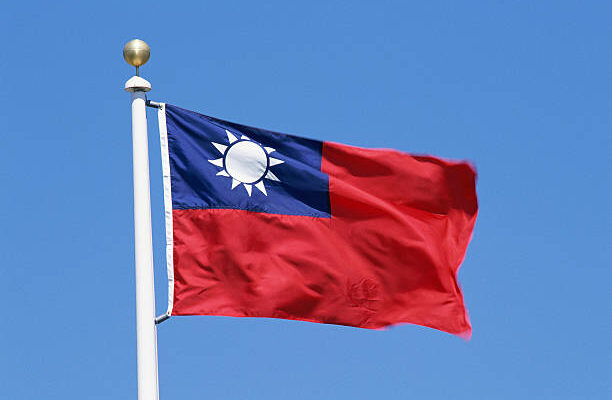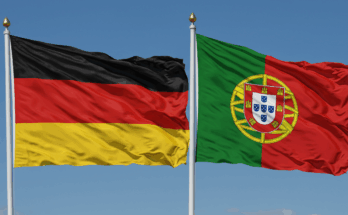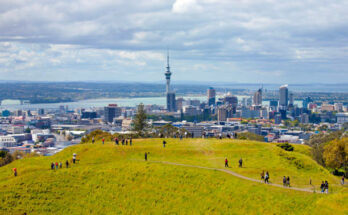A Country in Name and Spirit
When it comes to travel in Asia, Taiwan often gets lost in the shadow of its larger neighbors—China, Japan, and South Korea. Yet, this small island nation offers a rich tapestry of culture, history, natural beauty, and cutting-edge urban life that rivals any other destination in the region.
Despite being a vibrant democracy with a thriving economy, world-class healthcare, and some of the best food on the planet, Taiwan remains curiously underappreciated by global travelers and international media alike . This article will explore why Taiwan deserves far more attention than it currently receives—and how it stands as a true hidden gem of the East.
Taipei: A Modern Metropolis with Deep Roots
At the heart of Taiwan lies Taipei , a city where futuristic skyscrapers coexist with centuries-old temples. Known for its cleanliness, safety, and efficiency, Taipei is a prime example of how urban living can be both modern and livable.
The iconic Taipei 101 , once the tallest building in the world, dominates the skyline and serves as a symbol of Taiwan’s economic prowess. Nearby, the National Palace Museum houses one of the largest collections of Chinese art and artifacts outside mainland China, preserving millennia of cultural heritage.
Yet beyond the towering glass façades and neon-lit streets, Taipei also offers tranquil escapes:
- Maokong Gondola : A scenic ride above tea plantations to panoramic mountain views.
- Beitou Hot Springs : A relaxing retreat into geothermal baths nestled in lush forests.
- Longshan Temple : A spiritual haven reflecting the island’s deep Buddhist and Taoist traditions.
Street food lovers will find themselves in heaven at night markets like Shilin or Raohe , where delicacies such as stinky tofu, oyster omelets, and bubble tea originated.
Natural Wonders: From Mountains to Coastlines
While Taipei dazzles with its urban sophistication, Taiwan’s true magic lies in its untouched landscapes . The island is a nature lover’s paradise, boasting dramatic coastlines, volcanic hot springs, misty mountain ranges, and dense tropical forests.
Taroko National Park , carved by the Liwu River, is among the most breathtaking places in Asia. Its marble gorges, suspended skywalks, and thundering waterfalls create an almost otherworldly experience. Meanwhile, Yushan (Jade Mountain) —the highest peak in Northeast Asia—offers challenging hikes with rewarding summit views.
For those seeking coastal beauty, Kenting National Park in the south provides white-sand beaches, coral reefs, and warm tropical weather year-round. In contrast, the rugged cliffs of Yeliou and the basalt columns of Lüdao (Green Island) offer dramatic seascapes shaped by wind and tide.
Taiwan is also home to Alishan , a highland area famous for its sunrise over sea clouds, historic forest railways, and ancient cypress trees that have stood for thousands of years.
Cultural Richness: A Blend of Indigenous and Immigrant Influences
Taiwan’s cultural identity is deeply layered. While Han Chinese influences dominate due to historical migration patterns, the island is also home to 16 officially recognized Indigenous tribes , each with distinct languages, customs, and traditions.
The Atayal , Amis , Paiwan , and other groups have lived on the island for thousands of years and continue to preserve their heritage through music, dance, crafts, and storytelling. Visiting Indigenous communities offers a rare opportunity to experience traditional lifestyles and participate in ceremonies passed down through generations.
Festivals play a central role in Taiwanese culture. Events like the Lunar New Year Lantern Festival , Ghost Festival , and Dragon Boat Festival are celebrated with great enthusiasm across the island. Notably, Pingxi Sky Lantern Festival sees thousands of glowing lanterns released into the night sky—a magical sight symbolizing wishes and hopes.
Gastronomy: A Culinary Powerhouse
Food is arguably the strongest reason to visit Taiwan. With its diverse influences—from Hokkien and Hakka cuisine to Japanese and Indigenous flavors—Taiwanese food offers something for every palate.
From street food to fine dining, here are just a few must-try dishes:
- Beef noodle soup – Often considered the national dish, rich in flavor and available in countless variations.
- Bubble tea (zhen zhu naicha) – Born in Taichung, this sweet, chewy beverage has become a global phenomenon.
- Stinky tofu – An acquired taste, but a beloved local favorite known for its strong aroma and crispy texture.
- Oyster omelet – A savory treat made with eggs, oysters, and a special sweet sauce.
- Braised pork rice (lu rou fan) – A humble yet delicious comfort food staple.
Night markets like Fengjia , Ningxia , and Kangqiao are culinary playgrounds where visitors can sample dozens of dishes in one evening—all at wallet-friendly prices.
A Tech Hub with Global Influence
Beyond tourism, Taiwan plays a critical role in the global tech industry. It is home to TSMC , the world’s leading semiconductor manufacturer, and companies like ASUS , Acer , and HTC , which have helped shape the digital landscape.
Despite its technological might, Taiwan’s innovation extends beyond electronics. The country leads in sustainable agriculture, green energy, and public health infrastructure. During the global pandemic, Taiwan’s early and effective response became a model for many nations.
This blend of tradition and innovation makes Taiwan uniquely positioned as a forward-thinking society rooted in deep cultural values.
Political Identity: A Nation Without Recognition
One of the reasons Taiwan remains overlooked internationally is due to its complex political status. Although it functions as a de facto independent state with its own government, military, constitution, and elections, it is not universally recognized as a sovereign nation .
Due to diplomatic pressure from the People’s Republic of China, Taiwan is excluded from many international organizations, including the United Nations. As a result, it receives less global media coverage and fewer tourists than its merits warrant.
However, for travelers, this means fewer crowds, more affordable prices, and a chance to experience a democratic society that embraces freedom, diversity, and openness.
Travel-Friendly and Safe
Taiwan consistently ranks among the safest countries in the world. Crime rates are low, and locals are known for their friendliness and willingness to help foreigners. Public transportation is efficient, clean, and easy to navigate—even for first-time visitors.
The Taiwan High Speed Rail (THSR) connects major cities along the western corridor, making it simple to explore from north to south. Buses, subways, and bike-sharing systems provide seamless access within cities, while domestic flights and ferries open up remote islands like Penghu , Orchid Island , and Kinmen .
English signage is widespread in tourist areas, and many younger people speak conversational English. Even if you don’t know Mandarin or Hokkien, getting around is rarely a problem.
Festivals and Events: A Celebration of Life
Taiwanese culture thrives on celebration, and festivals are a cornerstone of daily life. Whether religious, seasonal, or cultural, these events showcase the vibrancy and spirit of the island.
- Ghost Month (August) – A time when spirits are believed to roam the earth, marked by rituals, performances, and offerings.
- Dongding Oolong Tea Festival – Celebrates Taiwan’s famed tea culture in Nantou County.
- Kaohsiung Light Festival – A dazzling display of light installations along Love River.
- Mazu Pilgrimage – One of the largest religious processions in Asia, attracting millions of devotees annually.
These events not only attract tourists but also serve as a window into the island’s spiritual and communal soul.
Off-the-Beaten-Path Destinations
While Taipei and Tainan grab most of the headlines, Taiwan is full of lesser-known treasures waiting to be discovered:
- Hualien & Taitung : Coastal towns offering adventure sports, indigenous culture, and proximity to Taroko Gorge.
- Chiayi : A gateway to Alishan and home to charming old train lines and historic architecture.
- Wang’an & Magong (Penghu Islands) : A subtropical archipelago perfect for snorkeling, windsurfing, and beach relaxation.
- Jiufen : A former gold-mining town turned atmospheric mountain village with stunning ocean views.
Each of these spots offers a different perspective on what makes Taiwan so unique—its ability to balance tradition with modernity, serenity with excitement.
Why Taiwan Remains Under the Radar
Despite its many strengths, Taiwan continues to fly under the radar for several reasons:
- Political Complexity : Many international travelers are unaware of Taiwan’s existence or mistakenly believe it’s part of China.
- Limited International Exposure : Due to exclusion from global platforms, Taiwan receives less media attention and marketing.
- Language Barrier : While younger generations speak English well, language differences can deter some travelers.
- Misconceptions : Some assume that visiting Taiwan is similar to visiting China, missing out on its unique identity.
But for those who venture here, the rewards are immense. Taiwan offers an authentic Asian experience without the overwhelming crowds, high costs, or language barriers found elsewhere.
Rediscovering Taiwan – Asia’s Best-Kept Secret
Taiwan is more than just a travel destination—it’s a place where past and future converge, where nature and technology thrive side by side, and where warmth and hospitality define the visitor experience.
As the world becomes increasingly interconnected, it’s time for travelers, investors, and global citizens to take another look at Taiwan. Whether you’re drawn by its food, its landscapes, its culture, or its innovation, there’s no denying that this island has something truly special to offer.
So, if you’re looking for a destination that combines rich history, modern comforts, natural wonders, and unforgettable experiences—Taiwan is calling your name .



